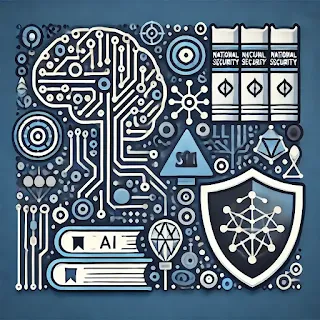Presentation on Digital Tools and Technologies in Curriculum Design
Introduction
- Presenters:
- Jess Humphries: Deputy Director of WIHEA (Warwick International Higher Education Academy) and Academic Developer at the University of Warwick.
- Aishwarya: Master's student at Warwick Business School and Project Officer on the team.
- Emily Hater: Learning Technologist from the University of Brighton.
- Lucy Childs: Senior Lecturer from the University of Brighton.
- Other Team Members: Matt, Hita Parsi (Academic Developer), and Ola (student).
Background and Rationale
- Project Initiation: Started in October of the previous year as a collaboration between the University of Warwick and the University of Brighton.
- Funding: Supported by WIHEA to explore collaborative projects between institutions.
- Aim: To investigate the role of technology in curriculum design and address existing research gaps.
Existing Work in the Field
- Key References:
- JISC Reports (2015/2016): Highlighted the role of technology in enabling curriculum design and stakeholder engagement.
- QAA's Digital Taxonomy for Learning: Provided a framework for digital learning.
- "Beyond Flexible Learning" by Advance HE: Discussed flexible learning approaches.
- Recent JISC Report: "Approaches to Curriculum and Learning Design across UK Higher Education" focusing on post-COVID strategies.
- Padlet Board by Danielle Hinton: Compiled over 100 universities' curriculum design approaches.
- Vocabulary Importance: Clarified terms like hybrid, HyFlex, asynchronous, and synchronous learning.
Project Aims
- Exploration: How technology is used in curriculum design for inclusivity and accessibility.
- Gap Filling: Addressing specific gaps in existing research.
- Focus: The role of technology in the curriculum design process, not just delivery.
Institutional Approaches
- University of Warwick
- Workshops for Course Leaders: Offering resources for departmental collaboration.
- Moodle Site Development: "Curriculum Development Essentials" for asynchronous learning.
- Technology Use: Padlet, Miro, Moodle, and online ABC workshops.
- University of Brighton
- Collab Curriculum Design Process: A light-touch approach developed two years ago.
- Process Components:
- Planning meetings with course teams.
- Teams area and Padlet board for collaboration.
- Two course design workshops focusing on aims, rationale, and assessment strategies.
- Two module design workshops on learning outcomes and learning activities.
- Key Tools: Microsoft Teams, Padlet, OneNote, and an online toolkit.
Methodology
- Survey Design: Created to fill research gaps identified in previous studies.
- Distribution: Nationwide via various channels.
- Participants: 27 respondents, including module leaders, professional staff, and course leads.
- Survey Focus Areas:
- Post-pandemic modes of delivery and space usage.
- Preferred digital tools and technologies at different curriculum design stages.
- Collaborators and stakeholders involved.
- Time and workload allocations for curriculum design.
- Benefits, opportunities, barriers, and challenges.
- Reward and recognition in the curriculum design process.
Survey Findings
- Digital Tools Used:
- AI Tools: ChatGPT, Midjourney.
- Collaboration Tools: Microsoft Teams, SharePoint, Padlet, OneDrive, Miro.
- Presentation Tools: PowerPoint, Google Slides, Prezi.
- Others: Animation apps, community-building apps, data analysis tools.
- Modes of Delivery:
- Blend of Online and On-Campus: 39% prefer online, 33% prefer on-campus.
- Hybrid Models:
- Hybrid: Staff decide the mode of engagement.
- HyFlex: Students decide the mode of engagement (less common but growing).
- Stakeholders Involved:
- Primary: Academic colleagues, professional staff in quality enhancement.
- Others: Students, alumni, external bodies (PSRBs), employers, marketing, and communications teams.
- Accessibility and Flexibility:
- Needs Addressed:
- Remote work accommodations.
- Students with part-time jobs or varying schedules.
- Technological Solutions:
- Collaborative platforms accessible to external participants.
- Features like collaborative document editing, version history, security measures.
- Needs Addressed:
- Workload and Time Allocation:
- Discrepancy Noted: Actual time spent often exceeds allocated time.
- Examples: Some allocated 80 hours but spent 200 hours.
- Lack of Formal Allocation: Many lacked official time allotments for curriculum design.
- Use of AI in Curriculum Design:
- High Interest: 95% would use AI tools.
- Applications:
- Brainstorming ideas.
- Generating content and learning outcomes.
- Image generation.
- AI Tools Mentioned: Generative text models (e.g., ChatGPT), AI image generators, subject-specific AI like Math GPT and Music LLM.
- Barriers and Challenges:
- Top Barriers:
- Limited time to learn and implement new technologies.
- Licensing and subscription issues for preferred tools.
- Other Challenges:
- Technical difficulties.
- Lack of training and support.
- Resistance to change among staff.
- Top Barriers:
- Reward and Recognition:
- Concerns:
- Time allocation for curriculum design tasks.
- Recognition in promotions and leadership opportunities.
- Compensation methods for student involvement.
- No Clear Solutions: Highlighted as areas needing attention.
- Concerns:
Next Steps
- Interviews: Conducting in-depth interviews to build on survey findings (two completed so far).
- Focus Areas:
- Use of digital technology and AI in curriculum design.
- Strategies for inclusivity and flexibility.
- Invitation: Open call for participation from other institutions and individuals.
Discussion Questions
- Examples Sought:
- Digital technologies that have made curriculum design more inclusive, flexible, or collaborative.
- How these technologies were implemented.
- AI Usage:
- Do you use AI tools like ChatGPT in your curriculum design?
- What are the opportunities and challenges associated with AI in this context?
Conclusion
- Project Status: Ongoing with evolving insights.
- Collaborative Effort: Involvement of both staff and students enriches perspectives.
- Community Engagement: Encouraged attendees to share experiences and insights.
Note: The presenters emphasized the importance of technology in enhancing the curriculum design process and are actively seeking collaborations and discussions to further this research.

%20in%20national%20security%20applications.%20Show%20a%20symbolic%20combination%20.webp)
%20in%20national%20security%20applications.%20Show%20a%20symbolic%20combination%20.webp)

